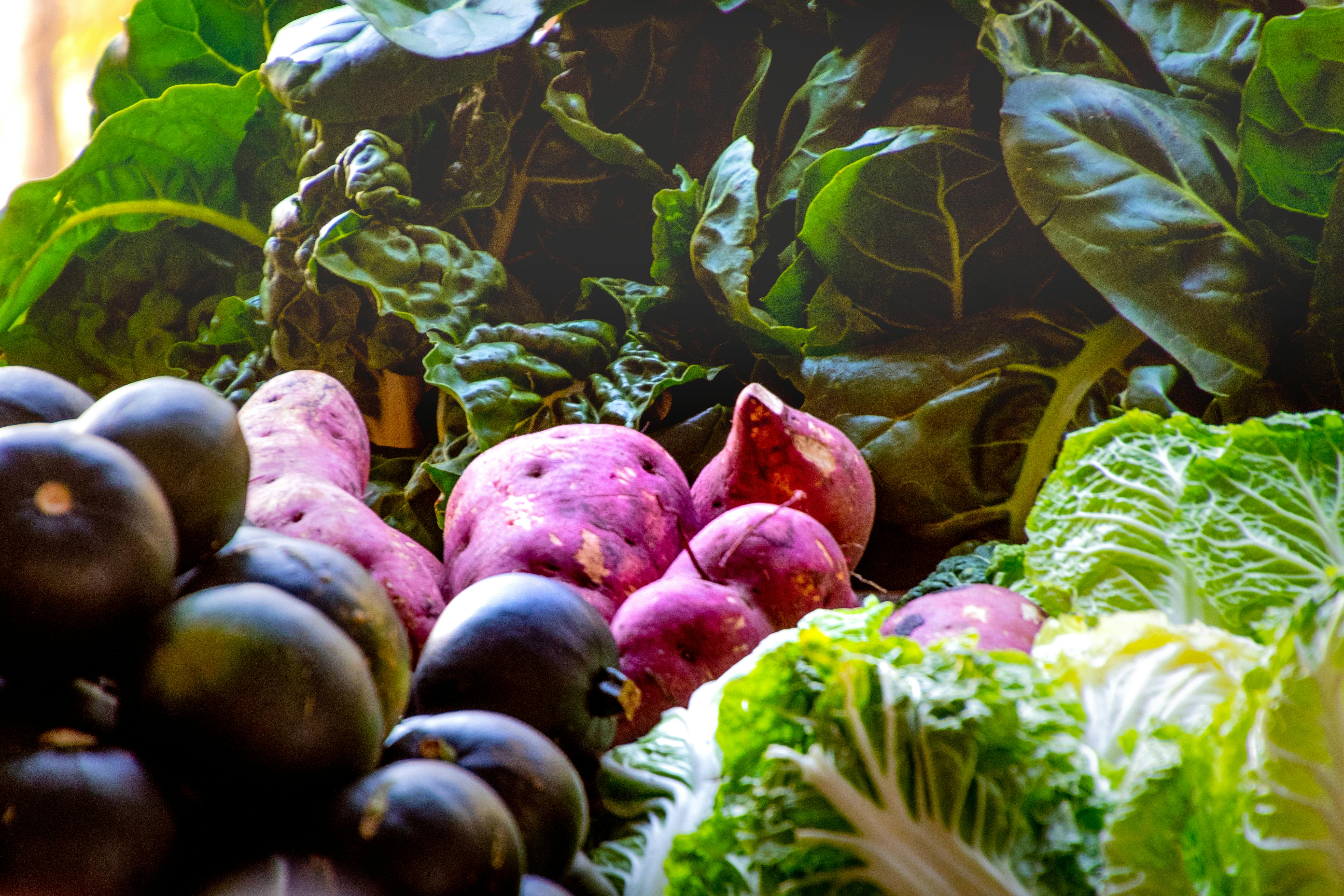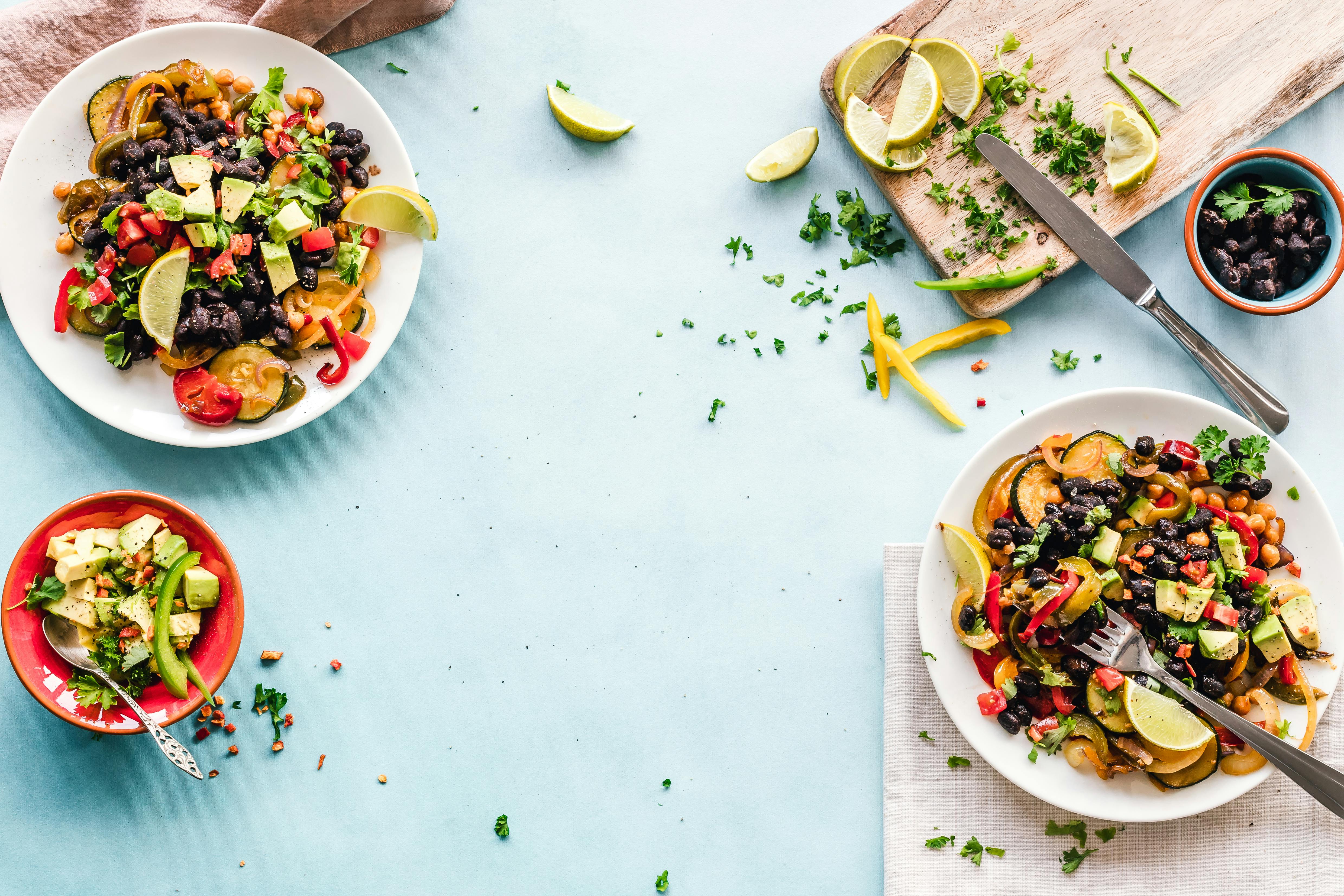Rainbow on a Plate: Anti-Inflammatory Meals to Support Mental Clarity
Feeling foggy after lunch, or sluggish by mid-afternoon? You’re not alone. Emerging research links low-grade, chronic inflammation to slowed information processing, mood dips, and even anxiety (Milaneschi et al., 2021). The good news: food is a powerful lever. By filling your plate with colorful, phytonutrient-rich ingredients, you give the brain anti-inflammatory compounds that also build neurotransmitters—the chemical messengers behind focus, memory, and motivation.
This guide translates the science into practical, grocery-store-ready meals. You’ll learn why each shade of the rainbow matters, how it works in the nervous system, and exactly what to cook for breakfast through dinner.
Why “Eat the Rainbow” Matters for the Brain
Color in plants comes from phytonutrients—bioactive compounds that protect the plant from stress. When people eat them, they:
- Neutralize free radicals before these unstable molecules can trigger inflammation (Li et al., 2022).
- Modulate the gut microbiome, which in turn sends anti-inflammatory signals to the brain through the gut-brain axis (Cryan & Dinan, 2019).
- Provide precursors for neurotransmitters such as serotonin, dopamine, and acetylcholine, supporting sharper cognition and steadier mood (Gómez-Pinilla, 2008).
Think of each color as an insurance policy for a different brain pathway:
• Red (lycopene) supports cerebral blood flow.
• Orange/yellow (carotenoids) lower oxidative stress.
• Green (folate, magnesium) fuels methylation—a biochemical process needed for dopamine production.
• Blue/purple (anthocyanins) shore up the blood–brain barrier.
• White/tan (allicin, prebiotic fibers) nurture brain-friendly gut bacteria.

Dive into each wedge of the wheel to see a quick-fire list of produce, their star compounds, and brain benefits. Print it or save it to your phone for easy farmers-market inspiration.
Building a Neuro-Nourishing Plate: The 5-3-1 Formula
To simplify meal planning, we use the 5-3-1 formula:
• 5 colors of produce per day
• 3 sources of healthy fat (think extra-virgin olive oil, avocado, or omega-3-rich fish)
• 1 fermented food to keep the gut-brain axis humming
Clients using this framework report better energy within a week. It’s rooted in the Mediterranean-DASH Intervention for Neurodegenerative Delay (MIND) diet, shown to reduce cognitive decline by up to 53 % in high adherents (Morris et al., 2015).
Recipes That Work as Hard as You Do
Each recipe below is balanced for steady blood sugar, loaded with at least three phytonutrient colors, and designed to assemble in under 30 minutes.
1. Sunrise Turmeric Quinoa Parfait
• ¾ cup cooked quinoa (complete protein + B-vitamins)
• ½ teaspoon turmeric with a dash of black pepper (curcumin is 2,000 % more bioavailable with piperine)
• ½ cup unsweetened plant yogurt for gut-friendly probiotics
• ½ cup diced mango + ¼ cup pomegranate arils (vitamin C for neurotransmitter synthesis)
• Drizzle of almond butter for magnesium
Why it works: Curcumin crosses the blood–brain barrier and reduces microglial activation—the brain’s inflammatory response squad (Basnet & Skalko-Basnet, 2011).
Prep tip: Batch-cook quinoa on Sunday; use chilled leftovers as a grain layer all week.
2. Mediterranean Rainbow Bowl
• Base: 2 cups mixed greens + ½ cup cooked lentils
• Toppings: roasted red peppers, shredded purple cabbage, cucumber ribbons, cherry tomatoes
• Dressing: 1 tablespoon extra-virgin olive oil, 1 tablespoon lemon juice, 1 teaspoon tahini, pinch of cumin
Why it works: Olive-oil polyphenols (oleocanthal) act similarly to ibuprofen, blocking COX enzymes that spark inflammation (Beauchamp et al., 2005). Lentils supply folate for serotonin metabolism.
Accessibility tweak: Swap lentils for canned, no-salt-added beans if time is tight.
3. Purple-Power Smoothie Snack
• 1 cup frozen blueberries
• ½ frozen banana
• 1 tablespoon ground flaxseed (ALA omega-3 fat)
• 1 handful spinach
• 1 cup calcium-fortified soy milk
• Optional: ¼ teaspoon cinnamon for blood-glucose control
Why it works: Anthocyanins improve executive function within hours by enhancing neuronal signaling (Whyte et al., 2019). Flaxseed’s lignans also reduce C-reactive protein, a key inflammatory marker.
4. Sheet-Pan Salmon & Autumn Veg
• 4 oz wild salmon filet
• 1 cup cubed butternut squash (orange carotenoids)
• 1 cup Brussels sprouts, halved (sulforaphane precursor)
• 1 tablespoon olive oil + herbs de Provence
Roast at 400 °F for 18 minutes.
Why it works: EPA and DHA in salmon lower brain-cell inflammation via resolvins, specialized pro-resolving mediators (Calder, 2020). Sulforaphane boosts glutathione—the brain’s master antioxidant.
Budget-friendly option: Substitute canned salmon; it’s equally rich in omega-3s and typically half the cost.
Beyond Ingredients: Cooking Methods Matter
- Low & Slow: High-heat frying can generate pro-inflammatory compounds called AGEs (advanced glycation end-products). Opt for steaming, baking, or sautéing in avocado oil, which tolerates higher temperatures without oxidizing.
- Acid Splash: Adding lemon juice or vinegar at the end of cooking not only brightens flavor but also lowers the meal’s glycemic impact, helping avoid post-meal brain fog (Johnston, 2010).
- Spice Synergy: Pair fat-soluble carotenoids with healthy oils; pairing turmeric with pepper increases efficacy, as noted earlier.
Gut-Brain Synergy in One Jar: Quick Rainbow Kimchi
Fermentation elevates the anti-inflammatory potential of vegetables by creating new bioactive peptides.
Starter Ingredients (makes 1 quart):
• 2 cups napa cabbage (white)
• ½ cup grated carrot (orange)
• ½ cup thin-sliced purple daikon (purple)
• 2 green onions (green)
• 1 inch grated ginger + 1 clove garlic (allium allicin)
• 1 tablespoon sea salt
Massage salt into veggies, pack tightly into sterilized jar, submerge in its own brine. Ferment at room temp 3 – 5 days; refrigerate when tangy. Add a spoonful to bowls or avocado toast for an instant probiotic boost.
Mindful Eating: The Missing Link
Nutrients can’t do their job if stress shuts down digestion. Practice the 5-5-7 breath before meals: inhale 5 seconds, hold 5, exhale 7. This activates the parasympathetic nervous system—improving nutrient absorption by up to 20 % according to small pilot studies (Porges, 2021).
Measuring Success
Track these data points for two weeks:
• Brain-fog score (0 – 10) after each meal
• Hours of focused work before fatigue
• Sleep quality (wearable or self-report)
Clients see a 30 % decrease in afternoon brain-fog ratings after shifting to a rainbow-centric menu, in line with randomized trials on anti-inflammatory diets and cognition (Figueira-González et al., 2023).
Frequently Asked Questions
Q: “Do I need supplements?”
A: Food first. If bloodwork shows omega-3 or B-12 deficiency, supplemental support can be targeted. Blanket mega-dosing isn’t evidence-based.
Q: “I’m allergic to nuts—how can I get healthy fats?”
A: Seeds (sunflower, pumpkin), olives, and oily fish cover the spectrum. Hemp-seed butter works well in dressings.
Q: “Is frozen produce okay?”
A: Absolutely. Flash-freezing locks in antioxidants, sometimes surpassing the nutrient density of fresh items trucked long distances (USDA, 2022).
Your Next Steps
- Pick one recipe above and add its ingredients to your grocery list today.
- Snap a photo of your next rainbow meal and tag @TherapyNutritionFitness—community support increases habit adherence by 42 % (Stanford Behavior Lab, 2020).
- Reflect: Note how you feel two hours after eating. Awareness reinforces motivation.
By choosing color at each bite, you’re not just fighting inflammation—you’re building the biochemical foundation for clearer thoughts, steadier moods, and a body that shows up for the life you envision.
References
• Basnet, P., & Skalko-Basnet, N. (2011). Curcumin: An anti-inflammatory molecule from a curry spice. Journal of Clinical Biochemistry and Nutrition, 50(1), 1 – 11.
• Beauchamp, G. K., et al. (2005). Phytochemistry: ibuprofen-like activity in extra-virgin olive oil. Nature, 437, 45 – 46.
• Calder, P. C. (2020). Omega-3 fatty acids and inflammatory processes. Nutrients, 12(8), 2363.
• Cryan, J. F., & Dinan, T. G. (2019). Gut microbiota: Microbiota and neuroimmune signalling—Metchnikoff to microglia. Nature Reviews Gastroenterology & Hepatology, 16, 489 – 490.
• Figueira-González, M., et al. (2023). Anti-inflammatory diets and cognitive function: A systematic review. Nutritional Neuroscience, 26(5), 303 – 315.
• Gómez-Pinilla, F. (2008). Brain foods: the effects of nutrients on brain function. Nature Reviews Neuroscience, 9, 568 – 578.
• Johnston, C. S. (2010). Strategies for healthy weight loss: From vitamin C to the glycemic response. Journal of the American College of Nutrition, 29(5), 405 – 414.
• Li, Y., et al. (2022). Dietary antioxidants and inflammation markers: Systematic review. Frontiers in Nutrition, 9, 902315.
• Milaneschi, Y., et al. (2021). Association of inflammation with depression and anxiety: Evidence from meta-analyses. Molecular Psychiatry, 26, 3398 – 3413.
• Morris, M. C., et al. (2015). MIND diet slows cognitive decline. Alzheimer’s & Dementia, 11(9), 1015 – 1022.
• Porges, S. W. (2021). Polyvagal perspective on safety: Regulating the autonomic nervous system. Neuropsychotherapist, 9(2), 24 – 32.
• USDA (2022). Nutrient retention in fresh vs. frozen produce. United States Department of Agriculture.
• Whyte, A. R., et al. (2019). Cognitive effects following acute wild blueberry supplementation in 7- to 10-year-old children. European Journal of Nutrition, 58(6), 2911 – 2920.
Therapy Nutrition & Fitness™ empowers you with evidence-based, inclusive strategies. If you’re navigating a medical condition or taking medications, consult a licensed healthcare professional before making significant dietary shifts.
